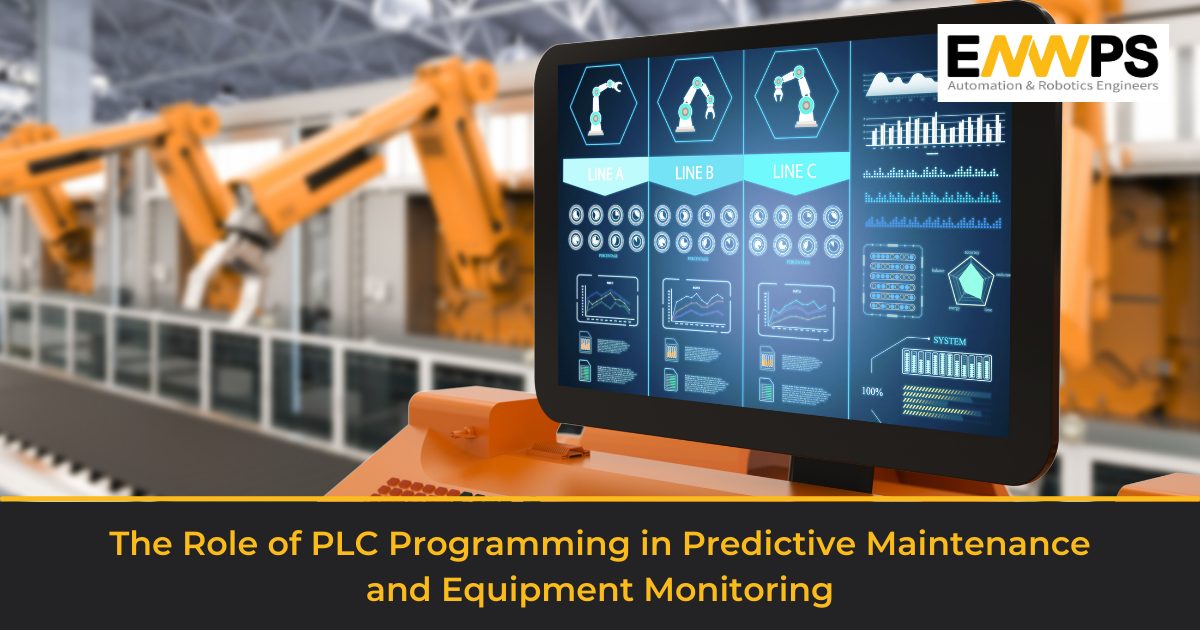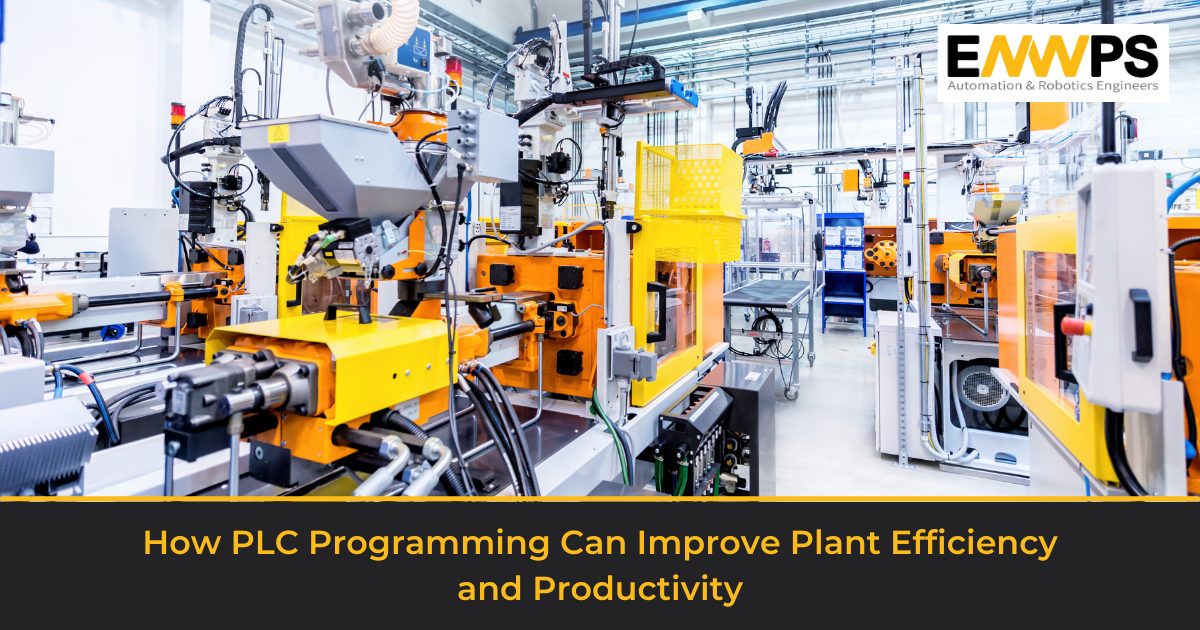
In the modern era of industrial automation, Programmable Logic Controllers (PLCs) play a crucial role in controlling and monitoring manufacturing processes. However, the effectiveness of PLCs is significantly enhanced when they are integrated into industrial networks. This blog will tell you how! We will explore the importance of advanced networking and communication in PLCs and the benefits and challenges associated with integrating PLCs into industrial networks. We will also discuss advanced networking technologies and communication protocols that facilitate seamless integration. By following best practices for integrating PLCs into industrial networks, manufacturers can unlock the full potential of their automation systems.
Overview of PLC Programming and Industrial Networks
Before diving into the details of advanced networking and communication in PLCs, let’s briefly understand the role of PLC programming and industrial networks.
PLC programming involves developing logical sequences and instructions that control the operation of PLCs. This programming determines how inputs from sensors and manual controls are processed and how outputs are generated to control various devices and machines in an industrial setting. PLCs are widely used in industries such as manufacturing, oil and gas, energy, and process automation.
Industrial networks, on the other hand, refer to the interconnected infrastructure that enables communication and data exchange between different devices, machines, and systems in an industrial environment. These networks facilitate real-time monitoring, control, and information sharing, thereby optimizing overall system performance and productivity.
The Role of PLCs in Industrial Networks
PLCs act as the central hub in industrial networks, enabling seamless integration and coordination of various devices and systems. They serve as a bridge between field devices, such as sensors and actuators, and higher-level systems, such as Human-Machine Interfaces (HMIs) or Supervisory Control and Data Acquisition (SCADA) systems.
PLCs collect data from sensors, process it using the programmed logic, and generate control signals to operate actuators and devices. They provide a unified interface to monitor and control different machines and processes, ensuring synchronization and efficient operation.
Importance of Advanced Networking and Communication
Advanced networking and communication are crucial in PLCs for several reasons:
- Real-Time Data Exchange: Advanced networking allows PLCs to communicate with other devices and systems in real-time. This enables rapid response to changes in the industrial environment, facilitating timely decision-making and preventing potential issues.
- Enhanced Control and Coordination: PLCs integrated into industrial networks can exchange data with other devices, such as motor drives or robots, enabling precise control and coordination.
- Scalability and Flexibility: It allows the addition of more devices and systems as needed. It also enables flexible reconfiguration of networked devices, facilitating adaptations to changing production requirements or system expansions.
- Remote Monitoring and Diagnostics: Networking enables remote monitoring and diagnostics of PLCs, providing insights into system performance and identifying potential issues.
Integrating PLCs into Industrial Networks: Challenges and Benefits
Integrating PLCs into industrial networks presents both challenges and benefits. To successfully integrate PLCs into your industrial networks, you need to understand the challenges and tackle each of them early on in the process.
Challenges:
- Network compatibility
- Network security
- Poor communication
- Overcoming system complexity
- Timely maintenance and support
Benefits:
- Seamless data exchange
- Increased efficiency and productivity
- Centralized management
- Improved quality
- Enhanced flexibility
- Advanced safety
Advanced Networking Technologies for PLC
Several advanced networking technologies facilitate the integration of PLCs into industrial networks:
- Ethernet/IP: Ethernet/IP is a widely used industrial networking technology that allows PLCs to communicate with other devices over standard Ethernet networks. It provides fast data transfer rates, supports real-time communication, and offers seamless integration with higher-level systems.
- Profinet: Profinet is another popular industrial Ethernet-based protocol that enables high-speed communication and data exchange between PLCs and other networked devices. It offers deterministic behavior, enabling precise control and synchronization of processes.
Communication Protocols for PLCs in Industrial Networks
Communication protocols play a vital role in enabling PLCs to communicate with other devices and systems in industrial networks. Some commonly used protocols for PLC communication include:
- Modbus: Modbus is a widely adopted serial communication protocol used for PLC-to-PLC or PLC-to-computer communication. It allows for the exchange of data between multiple devices and supports both point-to-point and multi-point communication.
- OPC (OLE for Process Control): OPC is a standard protocol used for interoperability between different automation systems and devices. It allows PLCs to communicate with various software applications, databases, and other devices.
Best Practices for Integrating PLCs Into Industrial Networks
To ensure successful integration of PLCs into industrial networks, the following best practices should be followed:
- Plan the network infrastructure carefully, considering factors such as scalability, reliability, and security.
- Define network segments, use appropriate switches and routers, and implement redundancy mechanisms for critical systems.
- Implement robust security measures to protect the network from unauthorized access and cyber threats.
- Regularly monitor network performance, including latency, packet loss, and bandwidth utilization.
- Implement network monitoring tools to identify and troubleshoot any issues promptly.
- Perform regular maintenance activities, such as firmware updates, to ensure the stability and reliability of PLCs and networked devices.
Conclusion
In conclusion, advanced networking and communication play a vital role in the successful integration of PLCs into industrial networks. By leveraging advanced networking technologies and communication protocols, manufacturers can optimize control, coordination, and data exchange within their automation systems. Although integration poses challenges, the benefits include enhanced efficiency, increased productivity, and centralized management. By following best practices for network design, security, monitoring, and maintenance, manufacturers can ensure seamless integration and unlock the full potential of their PLCs in industrial networks. Embracing advancements in networking technologies will further enhance PLC programming, enabling smarter and more efficient industrial automation systems.
Talk to us today! Reach us on automation@enwps.com



